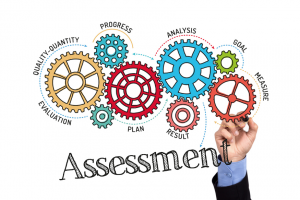
According to several studies, well-designed employee orientation and onboarding can improve employee retention by more than 80%.
“Sally started her new job on a Monday, excited to be working for a company that had a great selection process. But she learned an hour after arriving that her boss was too busy to talk with her until later in the week.
Todd was assigned to get her started and to show her where everything was located (e.g., office, laptop, passwords, restrooms, lunch room). But he didn’t know much about her job duties. He could only help get the items she needed for her desk.
So, Sally started talking with her new team and coworkers in different departments. Everyone had a different point of view as to what her priorities should be. Then, her vice president and the CEO each had conversations with her, but offered different opinions about where her focus should be.
On Friday afternoon she resigned, clearly frustrated by the lack of a cohesive onboarding process.” (Hire Amazing Employees: How to Increase Retention, Revenues and Results!)
New hires decide how long they will stay during the first few hours and days, often subconsciously! As a result, companies that fail to provide employee orientation and onboarding programs experience higher turnover! Remember, when these new hires leave, they take along other top talent, and customers too!
What To Do!
Create employee orientation and onboarding as part of your strategic selection system.
Start employee orientation the minute they apply. Use your Applicant Tracking System (ATS) to send job applicants short videos about the company, interview guidelines, and brief written material about the company’s products, goals, and employee benefits.
Have all “paperwork” completed online! Do this before the new hire’s first day. Have a designated person available to answer all questions and handle benefit enrollment.
Schedule the all-important 1:1 meeting with the boss on day one! Review expectations to ensure both of you are on the same page. People will forget … so this is critical! Share (again) the 180-Success Plan*, goals, and expectations. Then, have them put together the Action Plan required to fulfill it. *Chapter 6, Hire Amazing Employees
Help the new hire meet and greet coworkers. Designate someone to make introductions to key people and coworkers in the company. Organize lunches and get-togethers during the first month to meet others. The purpose is for the new hire to learn about the company and its customers, internally and externally. Remember to include remote employees too!
Ensure the new employee meets 1:1 with team members. Encourage meetings virtually and onsite. Provide a short list of suggested questions so that s/he can learn more about the company.
- Tell me about you!
- How long have you worked here?
- What do you like most about the company? Your job?
- What do you like least?
Very Important Note: Remind each new employee to listen more than talk. Many employees, managers, and executives in new positions attend meetings not to listen and learn, but to state what they will be doing and changes they will make in the future. This often shortens the new person’s longevity with the company and is avoidable!
Schedule meetings with key employees in other locations. This is often overlooked or put off until a future date. The problem is that the new manager or executive dismisses the importance of meeting people in their business locations. This is often interpreted as a lack of respect. And creates future problems when addressing issues and implementing policy changes.
Provide an inside mentor and outside executive coach. New hires must have someone to ask for help so s/he can learn more about the company and industry issues (mentor). Also, provide someone to talk them through the inevitable challenges s/he will face with people and in sticky situations (coach). Discuss these expectations before hiring the person … not everyone sees the value of having a mentor or coach. And it’s important to learn during the interview if the person will ask for help and is coachable.
Don’t provide company information all at once! Take days and weeks to discuss the company’s policies, procedures, and employee handbook. Also, review company etiquette, history, mission, values, and communications in 1:1 meetings and group training. Finally, provide an organization chart and brief written material about each department and location. Remember, keep it simple and easy to read since the average reading level is 6th grade!
Remember, as the boss, work the plan with the new hire for success!
(Content for article taken from Hire Amazing Employees: How to Increase Retention, Revenues and Results!)
©Jeannette Seibly, 2022 All Rights Reserved
 Jeannette Seibly is The Leadership Results Coach. She has been an award-winning international executive and family business management consultant, keynote speaker, and author for over 29 years. Her focus is to guide leaders to make a positive difference. Feel stuck moving your team forward? Want straightforward counsel on how to do it? Let’s chat! Contact Jeannette for a confidential conversation.
Jeannette Seibly is The Leadership Results Coach. She has been an award-winning international executive and family business management consultant, keynote speaker, and author for over 29 years. Her focus is to guide leaders to make a positive difference. Feel stuck moving your team forward? Want straightforward counsel on how to do it? Let’s chat! Contact Jeannette for a confidential conversation.
A note from Jeannette about improving employee onboarding: Did you know only 12% of companies onboard effectively? It’s why many new hires leave! What do you need to do to improve (or create) your employee orientation and onboarding processes for new hire success? This information comes from the newly released, Hire Amazing Employees: How to Increase Retention, Revenues and Results! Have questions? Most do! Let’s chat now!
 Why do new hires leave so soon? There can be many reasons. But it’s often due to NO (or the poorly designed) new employee orientation and onboarding program! Be part of the 12% that onboards effectively! Want ideas to help you get started? Get your copy of the newly released, Hire Amazing Employees: How to Increase Retention, Revenues and Results!
Why do new hires leave so soon? There can be many reasons. But it’s often due to NO (or the poorly designed) new employee orientation and onboarding program! Be part of the 12% that onboards effectively! Want ideas to help you get started? Get your copy of the newly released, Hire Amazing Employees: How to Increase Retention, Revenues and Results!


 Jeannette Seibly is The Leadership Results Coach. She has been an award-winning international executive and family business management consultant, keynote speaker, and author for over 29 years. Her focus is to guide leaders to make a positive difference. Feel stuck moving your team forward? Want straightforward counsel on how to do it? Let’s chat!
Jeannette Seibly is The Leadership Results Coach. She has been an award-winning international executive and family business management consultant, keynote speaker, and author for over 29 years. Her focus is to guide leaders to make a positive difference. Feel stuck moving your team forward? Want straightforward counsel on how to do it? Let’s chat! 




 Jeannette Seibly is The Leadership Results Coach. She has been an award-winning executive coach, management consultant, and keynote speaker for over 28 years. Her focus is getting leaders and their teams unstuck and able to achieve dynamic results.
Jeannette Seibly is The Leadership Results Coach. She has been an award-winning executive coach, management consultant, and keynote speaker for over 28 years. Her focus is getting leaders and their teams unstuck and able to achieve dynamic results. 

 Jeannette Seibly is The Leadership Results Coach. She has been an award-winning executive coach, management consultant, and keynote speaker for over 28 years. She is an expert in guiding leaders and their teams to get unstuck and achieve dynamic results.
Jeannette Seibly is The Leadership Results Coach. She has been an award-winning executive coach, management consultant, and keynote speaker for over 28 years. She is an expert in guiding leaders and their teams to get unstuck and achieve dynamic results.